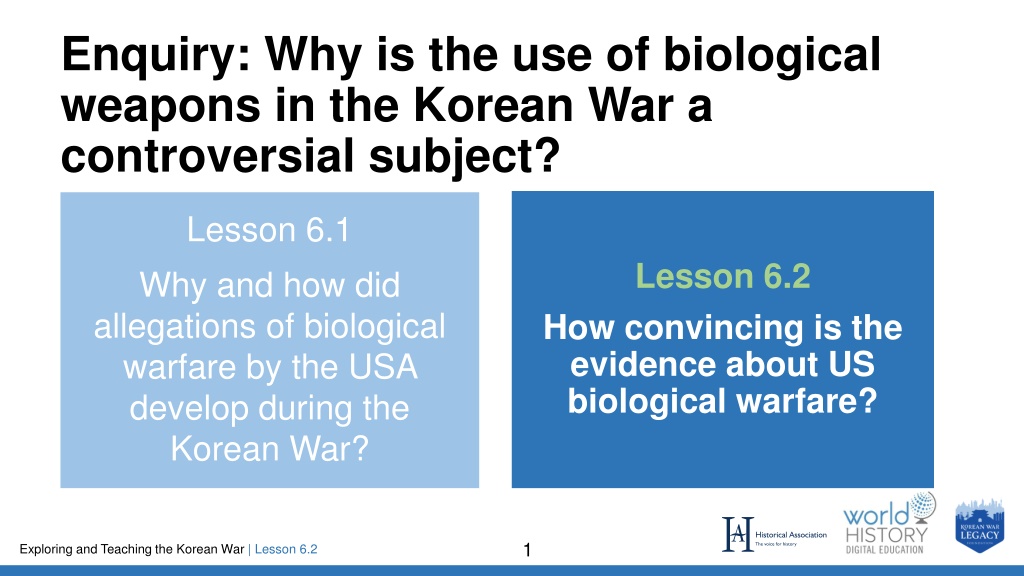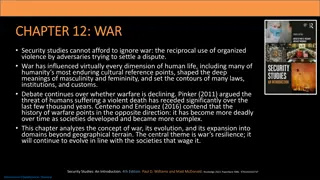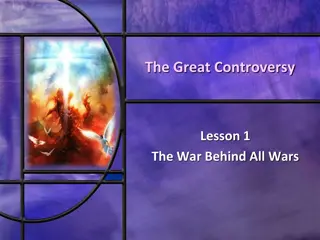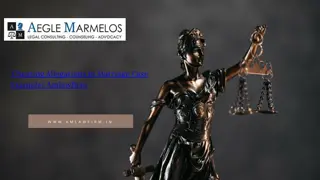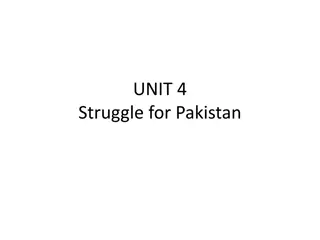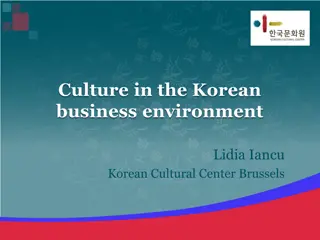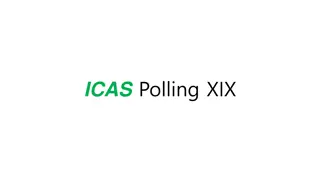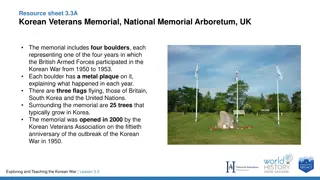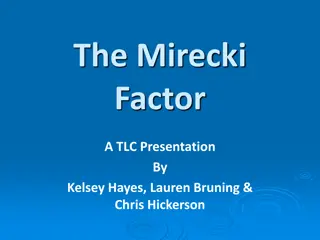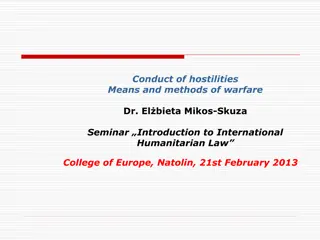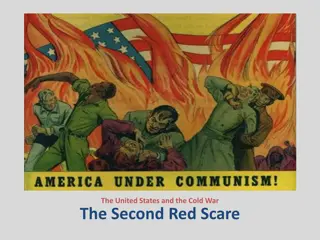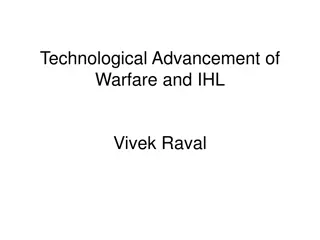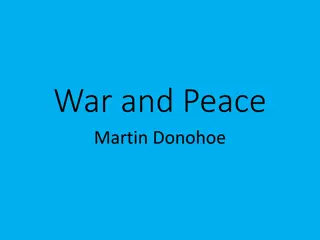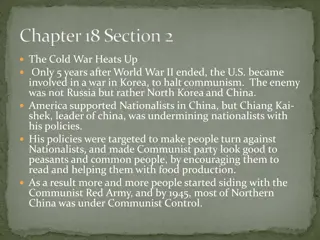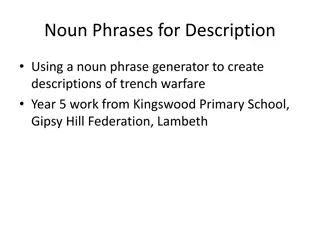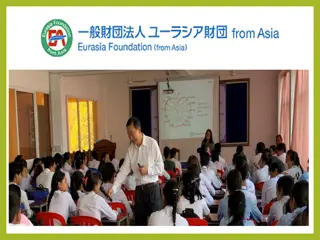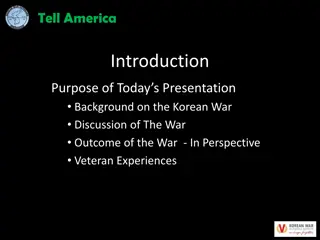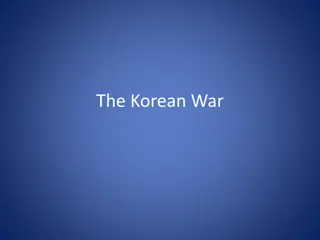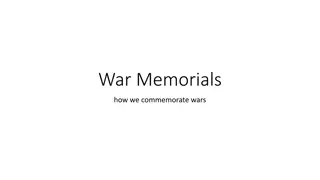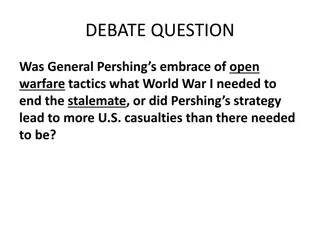Controversy Surrounding Allegations of Biological Warfare in the Korean War
During the Korean War, the use of biological weapons became a contentious issue, particularly with accusations directed at the USA. The controversy stemmed from conflicting reports and evidence, leading to investigations by various parties and disputed claims. The lesson explores the development of these allegations, the evidence presented, and the challenges in determining the validity of such claims.
Download Presentation

Please find below an Image/Link to download the presentation.
The content on the website is provided AS IS for your information and personal use only. It may not be sold, licensed, or shared on other websites without obtaining consent from the author. Download presentation by click this link. If you encounter any issues during the download, it is possible that the publisher has removed the file from their server.
E N D
Presentation Transcript
Enquiry: Why is the use of biological weapons in the Korean War a controversial subject? Lesson 6.1 Why and how did allegations of biological warfare by the USA develop during the Korean War? Lesson 6.2 How convincing is the evidence about US biological warfare? 1 Exploring and Teaching the Korean War | Lesson 6.2
Lesson 6.2 Overview Content covered in this lesson: Recap the key moments in the debate Examine and evaluate the evidence Summarise your conclusions Answer the enquiry question using appropriate language of certainty Lesson 6.2 How convincing is the evidence about US biological warfare? 2 Exploring and Teaching the Korean War | Lesson 6.2
A - The US requests to have the International Red Cross investigate the charges denied by the USSR. C - The North Korean government alleges biological weapons usage by the USA. The Chinese government later reinforces this. E - Tibor Meray, a Hungarian journalist, reports in 1956 that Chinese officials had said to Polish and Yugoslavian counterparts that the allegations were likely a hoax. Lesson starter Recap the last lesson by putting the following events in correct chronological order: B - Dean Acheson, US Secretary of State, rejects the Needham Commission report. D - The USSR establishes two investigations backed by its own front organisation, the World Peace Council (the IADL and Needham Commission) these confirm US biological weapons usage. F - US government allegedly conspires with ex-Japanese WWII scientists involved in biological weapons development. 3 Exploring and Teaching the Korean War | Lesson 6.2
How strong is the evidence to support the claims that the USA used biological weapons in Korea? In this lesson, you are going to examine some of the evidence yourselves about whether or not the USA used biological weapons in the Korean War. The evidence itself is highly contested and you should treat it with caution. It is vital that you read not just what each source says, but also the information about its creation. This will help to determine whether it is strong or weak evidence. Some of the sources are documentary, while others provide factual information. Task You have been given ten sources of evidence to consider. They all relate somehow to the allegations that the USA used biological weapons in the Korean War. Study the information and complete the table on the next slide (Resource sheet 6.2B). 4 Exploring and Teaching the Korean War | Lesson 6.2
Source Does it support or challenge the allegations? Explain your answer. How convincing is the source as evidence? (Score 1 5) Justification for your score A B C D E F G H I J 5 Exploring and Teaching the Korean War | Lesson 6.2
EVIDENCE PACK Source A In the light of all these and other similar facts, the Commission had no option but to conclude that the American Air Force was employing in Korea methods very similar to, if not exactly identical with, those employed to spread plague by the Japanese during the Second World War. Information about the origins of the source The International Scientific Commission for the Investigation of the Facts concerning Bacterial Warfare in Korea and China Final Report. The Commission was headed by British scientist Joseph Needham, who had long been an expert on China. The ISC was an organisation that was part of the World Peace Council A Soviet- backed organisation designed to promote peace around the world. 6 Exploring and Teaching the Korean War | Lesson 6.2
EVIDENCE PACK Source B Information about the origins of the source From an article by George Burchett in Counterpunch (written in February 2018). Burchett is the grandson of Wilfred Burchett, a communist-sympathising journalist from Australia. Counterpunch is a radical left- wing political magazine. The U.S. had been pursuing an active biological warfare program since 1942. After Japan s defeat in 1945, the Americans absorbed the more advanced Japanese BW research and began an accelerated development program at Fort Detrick, Maryland and other secret facilities. They had already conducted secret tests by spraying anthrax over San Francisco Bay, in Alaska and elsewhere. (As revealed in the German documentary Codename Artichoke.) Now they had to test them in real war conditions, on gooks and reds that stubbornly refused [to] yield to conventional military force and the natural superiority of the God-Fearing White Christian Man. (If you want to learn how deeply and fundamentally racist the Korean War was, read Bruce Cumings excellent The Korean War.) According to Supotnitskiy [a Russian biologist], dropping a few rats with plague-bacteria-infected fleas, contaminated feathers, disease-carrying insects etc. into caves and tunnels where red rats were hiding was very tempting and effective, both on an experimental and operational level. 7 Exploring and Teaching the Korean War | Lesson 6.2
EVIDENCE PACK Source C Information about the origins of the source Chinese propaganda poster from the Korean War era. The caption reads: Vaccinate everyone, to crush the germ warfare of American imperialism! The Chinese government launched a Patriotic Hygiene Campaign to fight back against the alleged biological attacks. The population was mobilised in a mass campaign to eradicate all fleas, rats, mosquitos and flies in the country. 8 Exploring and Teaching the Korean War | Lesson 6.2
EVIDENCE PACK Source D Information about the origins of the source This is a Chinese photograph of a vial containing infected fleas allegedly spread by the United States. 9 Exploring and Teaching the Korean War | Lesson 6.2
EVIDENCE PACK Source E There was no biological warfare carried out by any agency of the US government during the Korean War, or for that matter by anyone else. The false allegation was disproved as long ago as 1998 when documents from the Soviet Central Committee Archives that had been sent to Mao Zedong and to Kim Il Sung in the month following Stalin s death in 1953 were obtained from the Soviet Presidential Archive. They were published in 1998 in the Bulletin of the Cold War International History Project at the Woodrow Wilson Center in Washington, D.C. Information about the origins of the source Written by historian Milton Leitenberg to the New York Review of Books in 2018. Leitenberg is a senior research scholar at the University of Maryland. 10 Exploring and Teaching the Korean War | Lesson 6.2
EVIDENCE PACK Source F The claim that two places were concocted to fool foreign visitors does not prove that all the sites of alleged biological warfare were also contrived. Our research in Chinese archives shows that the Chinese army in Korea and the Korean medical service serving with it identified occurrences of plague in 13 places during February and March 1952 as well as outbreaks of anthrax, encephalitis and other abnormal diseases. The Soviet documents, if they are genuine, add a twist to the main documentation which, so far, is to be found in the Chinese and United States archives. Questions raised by the documents about their source, who ordered the falsification of evidence, and motive would need to be resolved. Information about the origins of the source The evidence used by historians like Milton Leitenberg to refute the Chinese and North Korean allegations has itself been challenged by other historians. The historians Stephen Endicott and Edward Hagermann have written extensively on US use of biological weapons and broadly agree that they were used. They say about Leitenberg s evidence: 11 Exploring and Teaching the Korean War | Lesson 6.2
EVIDENCE PACK Source G On 6 April 1952, the New York Times published an article demonstrating that the photos presented by the People s Daily were fraudulent. It was pointed out by one scientist that infected lice and fleas would not be able to survive the freezing temperatures of North Korea in winter. Li Shantang, a domestic opponent of the regime, said that This is all communist propaganda in an attempt to get the world to hate America, don t listen to all that rubbish! Information about the origins of the source The following points come from Frank Dikotter sThe Tragedy of Liberation (2013). Dikotter is a Dutch historian from the University of Hong Kong. 12 Exploring and Teaching the Korean War | Lesson 6.2
EVIDENCE PACK Source H Information found in Rogaski, R. (2002) Nature, annihilation and modernity in Journal of Asian Studies, 61, no. 2 Factual information The United States gave immunity to Japanese scientists from Unit 731, which was a germ warfare research organisation from Japan during the Second World War. This was in exchange for obtaining the research data and information that they had developed. This information was withheld from other wartime allies and the grant of immunity was covered up by the USA for many decades. 13 Exploring and Teaching the Korean War | Lesson 6.2
EVIDENCE PACK Source I Factual information Two of the key sources of evidence produced by China and North Korea for allegations of germ warfare were captured US prisoners of war who confessed to being involved in dropping infected insects on Korea and China. The USA claimed that these confessions were extracted as a result of torture and brainwashing. 14 Exploring and Teaching the Korean War | Lesson 6.2
EVIDENCE PACK Source J Information about the origins of the source This is an explanatory note from Glukhov (a Soviet diplomat) to Beria (head of the Soviet Secret Police) in 1953. It is published on the Wilson Center website. The bold emphasis has been added by us. The Koreans stated that the Americans had supposedly repeatedly exposed several areas of their country to plague and cholera. To prove these facts, the North Koreans, with the assistance of our advisers, created false areas of exposure. In June July 1952 a delegation of specialists in bacteriology from the World Peace Council [the Needham Commission] arrived in North Korea. Two false areas of exposure were prepared. In connection with this, the Koreans insisted on obtaining cholera bacteria from corpses which they would get from China. 15 Exploring and Teaching the Korean War | Lesson 6.2
How certain can we be that the USA used biological weapons during the Korean War? Task Do you believe the allegations or not? Yes or No will do. 1. Now draw a line from the text box to the arrow showing how certain you are, based on the evidence that you ve seen. 2. Then justify your choice in the text box, providing a balanced evaluation of the evidence you have examined. 100% 0% 16 Exploring and Teaching the Korean War | Lesson 6.2
Summary question: How convincing is the evidence about US biological warfare? Word bank: Starter sentences: The evidence against the USA is Here are some words and phrases that you could use in your answer, depending on your view. Write these down in your exercise book above your paragraph, and tick them off as they get used. The strengths/weaknesses of this evidence are USA China North Korea Soviet Union insects cholera and plague Needham Commission report Unit 731 Leitenberg Patriotic Hygiene Campaign fraudulent hoax strong weak evidence convincing unconvincing Endicott/Hagermann The USA claimed that The strengths/weaknesses of the US evidence are 17 Exploring and Teaching the Korean War | Lesson 6.2
Why is the use of biological weapons in the Korean War a controversial subject? Task Study this article then consider: 1. Why do you think the North Korean government still refers to these allegations of biological weapons usage in the present day? 2. What does that reveal about the wider debate? prohibited worldwide, from the winter of 1950 in order to recover a heavy defeat. Excerpt from the North Korean Pyongyang Times on 28 March 2019 The fact that US forces in South Korea have continued to push ahead with a plan for biochemical warfare has recently been disclosed, giving rise to serious concern among the South Korean people. According to the biochemical defence program budget assessment bill for the 2019 fiscal year worked out by the US Department of Defense, the US earmarked US$10.14 million more budget, or 15.6 percent rise over last year, for the Jupiter plan, a biochemical warfare plan targeting the DPRK, and decided to disburse US$3.5 million equivalent to 34.5 percent of the budget for wharf No. 8 of Pusan port, a dock for the US forces exclusive use, which is furnished with the general biochemical weapon lab and other related facilities. Already in 2015, the US made an experiment on germ weapons by shipping live anthrax into its airbase in Osan, Kyonggi Province, and took Zika virus into its military base in Ryongsan in 2016 to conduct a bacteriological weapon development experiment. In April 2017, it brought relevant equipment for carrying out the Jupiter plan into wharf No. 8. Such moves are reminiscent of the atrocities the US forces committed in the past. During the Korean war (1950 1953), they used germ weapons, whose use had been 18 Exploring and Teaching the Korean War | Lesson 6.2
